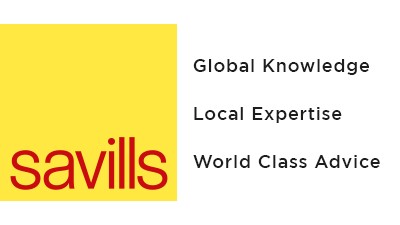The Roots To A Prospering Business Don’t Lie In Technology

It is not technology that will shape the next wave of innovation in offices. It is organisations’ realisation that to succeed, they need to make the most of their human assets. This means giving employees the space and flexibility they need to do the best job possible.
This is the view of Caroline Pontifex, KKS Savills' director of workplace experience. She has created workplaces for organisations spanning many sectors, with huge variation in the numbers of staff and how they choose to work throughout the day. What they have in common, however, is their recognition that providing tools alone isn’t enough to create a productive company culture.
“Innovative offices focus on the human requirement for relationships, for space and for focus – this is what will shape the success of the next wave of offices,” Pontifex said. “Technology is facilitating that, but it isn’t leading it. Yes, a workplace is flooded with technology, contributing to but not controlling how people interact. Natural human characteristics are shaping how workplaces look, feel and operate.”
Choice Is Everything
Savills’ What Workers Want Report: Europe 2019 asked employees from organisations across the continent what office factors most contribute to their overall satisfaction. The results showed that people have a range of preferences; 52% of people want a dedicated workspace, 18% want to work from home and 31% thought hot desking would increase productivity. The overall takeaway is that employees want choice about where they work, a practice known as agile or activity-based working.
“Activity-based working allows the user to decide what work environment they need for their particular activity or task,” Pontifex said. “It’s about providing multiple settings for different working styles and is not typically an allocated desk solution. Instead, it offers a diversity of settings to suit different personalities, functions and the changing nature of the working day.”
Pontifex cited the workspace KKS Savills created for law firm Withers as an example. Withers relocated from a predominantly fixed, cellular office environment where “the serendipitous bumping into people was just not happening”. People could spend weeks not seeing colleagues and they weren’t benefitting from others’ abilities and client relationships. Now Withers occupies an open plan setting with areas for quiet work or collaboration.
The benefits to providing employees with the most suitable workspace possible are well documented. Productivity will increase along with staff retention and recruitment. A less obvious benefit is providing the ability to concentrate which, according to Savills’ What Workers Want Report, is what 81% of people want.
“They say it takes 10,000 hours to become a master at something,” Pontifex said. “Organisations need to help people to not lead fragmented lives, to master the skill they bring to the workplace. Technology can disrupt our flow, constantly interrupting our train of thought. A successful workspace must blend speed of communication with the need for deep focus and the opportunity for mentoring. It’s a fine balance, which is why a workspace needs to have defined areas — quiet zones, collaboration areas. If you only have two work settings, a desk and a meeting room, for example, you won’t achieve that.”

How The Home Crept Into Work
Along with activity-based working, another trend that more successful organisations are finding boosts staff interaction is the domestication of the office environment. As technology has enabled us to work anywhere, more technology has entered the home, but the office is now being increasingly impacted by a sense of the home coming, such as the inclusion of breakout areas or biophilic design.
“We’re seeing a re-emergence of the social aspect of human activity, which is where productivity lies,” Pontifex said. “The office is becoming where you go to socialise, to have meetings and catch ups. Then we retreat to our own area for productive work. That’s what we’re facilitating; all our design work focuses on facilitating social interaction.”
Having worked with a range of organisations, Pontifex said that it is clear when an organisation has created a healthy culture, by prioritising people’s needs during a relocation project, for example. It’s equally as clear when an organisation has created a toxic environment, putting commercial drivers first. High staff turnover is often a distinct indicator, accompanying a transient culture.
However, creating a workplace with a hospitable environment is becoming increasingly the norm. Technology gave the office a new wave of productivity, but the next wave will come when organisations harness the cultural aspects of both teamworking and personal space. That is when they can get down to the business of innovation.
This feature was produced by Bisnow Branded Content in collaboration with Savills. Bisnow news staff was not involved in the production of this content.

